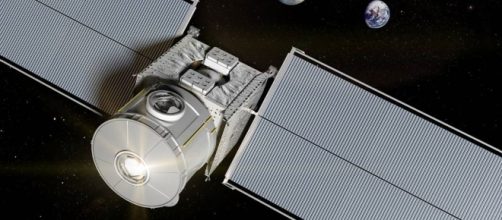The Planetary Society reports that NASA and some of the International Space Station partners have quietly started to design a space station in cis-lunar space. However, there seems to be some disagreement as to what its primary purpose would be. NASA, following the current, Obama-era Journey to Mars policy wants the cis-lunar station to be a stepping stone to Mars. Some of the other partners, such as Russia, want it to focus on lunar surface exploration. The difference would be reflected in what kind of orbit the station would be deployed around the moon.
For the station to focus on Mars, it would be placed in a Near-Rectilinear Halo Orbit that would range from 70,000 kilometers to 1,500 kilometers from the moon. The NRHO would ensure that the moon would never block sunlight from the station’s solar arrays and would make it easily approachable for the Orion launched on a space launch system rocket.
But an NRHO would make using the station as a base for lunar surface operations difficult. Russia, among other countries, want it deployed in a closer orbit around the moon. NASA may compromise by initially putting the station in a lower lunar orbit before later moving it to an NRHO when it comes time to send people to Mars. On the other hand, things will likely change when President Trump finally rolls out his space policy which is expected to pivot back to the moon to a certain extent.
The cis-lunar station would have a flexible design so that different modules can be attached and detached at will. This feature may be a nod toward Bigelow Aerospace’s offer to build its own cis-lunar station based around its inflatable modules.
While Bigelow has promised to have its station in lunar orbit by 2020 given the go ahead, the NASA/International station would likely deploy in 2023 with the first logistical flights to occur in the following year.
The station would be human-tended, with stents of weeks stretching into months as time goes by. The station would be deployed by a Space Launch System, but some cargo flights might be conducted on commercial rockets such as the SpaceX Falcon Heavy and the Blue Origin New Glenn and then New Armstrong.

